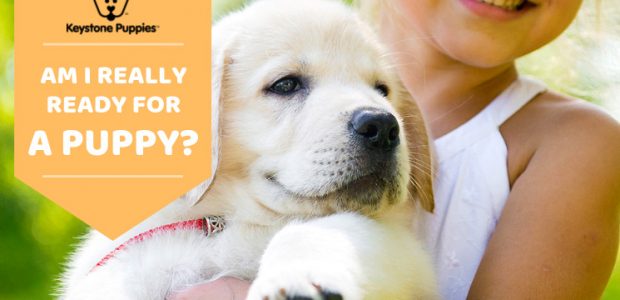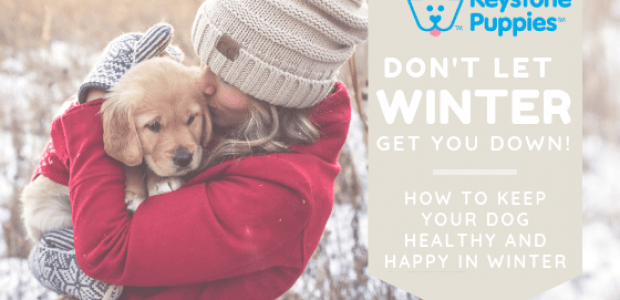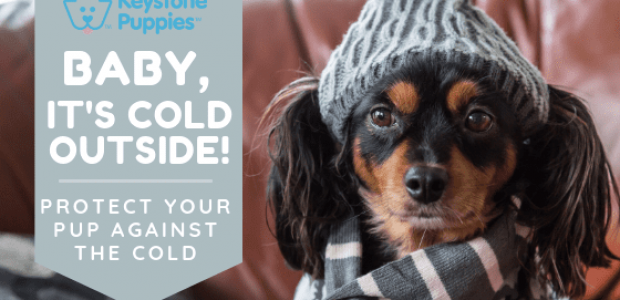Cool Dogs: How to Avoid Heat Exhaustion This Summer
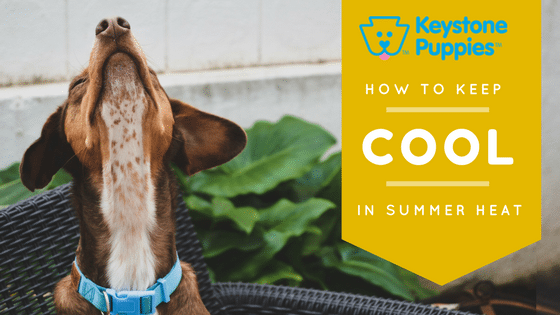
Summer is here, and it’s hot outside. While people slow down quickly in the heat, dogs, especially young puppies, may keep going even when the temperature climbs. That’s why it’s so important to keep a close watch on your dog in warm weather.
Keep Your Dog Hydrated
If you’re heading out in the heat, bring along a cooler of water for your dog. Keeping your dog thoroughly hydrated is the first step in keeping him cool. Give your dog small drinks frequently, instead of letting them drink large amounts all at once. Drinking lots of water too quickly can result in bloat because dogs that lap up lots of liquids also ingest a lot of air. Deep-chested and some other breeds are at higher risk of bloating, including Akitas, Great Danes, Boxers, German Shepherds, Saint Bernards, Neapolitan Mastiffs, English Mastiffs, Boerboels, Doberman Pinschers, Standard Poodles, and Irish Setters. Play it safe by giving you pup smaller amounts of water in frequent intervals.
Another way to check your puppy’s hydration level is to look at his gums. As a rule of thumb, your dog’s gums should be pink, shiny, and a little wet. If your pup’s gums look dry or feel tacky when you touch them, your dog is dehydrated. Get your dog out of the heat and start giving him small amounts of water in short intervals.
Read about more ways to detect dog dehydration on dogshealth.com.
Panting is Your Dog’s way of Cooling off
The first sign of an overheated dog is panting. Unlike people, dogs don’t sweat out excess body heat. Instead, they use rapid, open-mouthed breathing to cool down. Panting is a necessary part of your dog’s cooling system, but it may not be enough to cool your dog down, just as profuse sweating alone can’t cool down humans. If your dog starts to pant, make sure he has access to plenty of cool water. As mentioned earlier, give him liquids in small amounts at frequent intervals to prevent bloat. Get him out of the heat into the shade, in a breezy spot, or into an air-conditioned space. Let him rest thoroughly until his panting slows or stops, and he’s hydrated enough that his gums are glistening. A hydrated dog will usually refuse water. If you’re in a place that is keeping your dog excited, or otherwise makes him hard for him to take a rest, remove him from the situation until he is completely cooled down and hydrated.
Warning Signs of a Dangerously Overheated Pup
While excessive panting is the first symptom of heat exhaustion, you should also watch for signs of dangerous overheating. The American Kennel Club Canine Health Foundation lists danger signs as “collapse, convulsions, vomiting, diarrhea, and gums or a tongue that turn blue or bright red.” Other less obvious symptoms include glazed eyes, excessive drooling, a rapid heart rate, dizziness or lack of coordination, fever, and lethargy.
If your dog is showing any of these symptoms, wet him down using cool tap water before heading to the veterinarian. If you have towels, soak them in cool water and lay them on your pup. Call ahead to the vet or animal hospital to let them know you’re on the way, to help them prepare to act quickly.
Are Some Dogs at Greater Risk for Overheating?
All breeds of dog are at risk of overheating and should be monitored closely in warm weather. However, some breeds are more prone to heat exhaustion.
Brachycephalic Breeds
Brachycephalic breeds, with short noses and flat faces, tend to overheat more quickly than other breeds. This group includes Shih Tzus, Boxers, Pugs, American Bullys, Olde English Bulldogges, French Bulldogs, King Charles Cavalier Spaniels, and Boston Terriers. Consider exercising these dogs in the cool hours of early morning, or waiting until the sun sets to give them their daily walks. Playing in water is a great way to for them to keep cooler. And remember to never leave these breeds, or any type of dog, in parked cars in warm or hot weather.
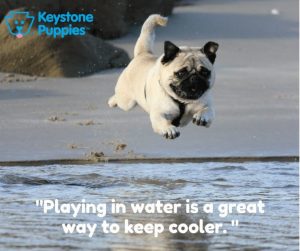
Active Hunting and Working Dogs
Extremely active dogs, working dogs, or hunting breeds can overheat in the warm months. These dogs have high enthusiasm for energetic exercise, and often ignore their body’s signals to slow down or cool down. This group includes German Shepherds, Labrador Retrievers, Beagles, Viszlas, Golden Retrievers, Chesapeake Bay Retrievers, Weimaraners, Redbone Coonhound Mix, Irish Setters, Border Collies, Collies, and Anatolian Shepherds, among others. These breeds tend to work and play hard, regardless of the weather, so make sure they get plenty of breaks, stop to rest in the shade and keep them well-hydrated at all times. Many of these breeds also appreciate water play, so a romp in the hose, a dip in the lake or access to a water sprinkler can also help them cool off.
Heavy-Coated Dogs Bred for the Snow
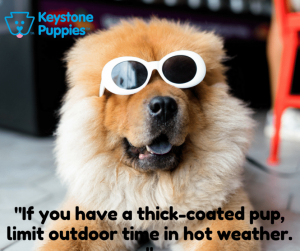
Dogs with thick double coats are well-suited to cold climates and can enjoy freezing cold weather. However, these thick coats also make difficult for these breeds to adjust to the heat. While many of these breeds are playful and friendly, they may not be able to handle large doses of warm weather. These breeds include Akitas, Alaskan Malamutes, American Eskimos, Chow Chows, Siberian Huskies, Newfoundlands, Saint Bernards, Great Pyrenees Mix, Keeshonds, Samoyeds, Shiba Inus, Bernese Mountain Dogs, Anatolian Shepherds, German Shepherds, and others.
If you have a thick-coated pup, limit outdoor time in hot weather. Get playtime in during the coolest hours of early morning. Or consider playing with your pup outside after dark, when temperatures cool down again.
Overweight, Very old or ill Dogs
Overweight dogs, very old dogs, or dogs with medical conditions, may be less able to cope with hot temperatures and high humidity. These health factors significantly increase your dog’s chance of experiencing heat exhaustion. Ideally, these dogs will spend short times in high temperatures, or stay cooler in the shade or indoors. As with all dogs, make sure they stay hydrated and have a cool place to rest. If you’re able to provide a kiddy pool of cool water, it’s an ideal way for these dogs to keep their body temperatures lower while still enjoying the hotter weather.
Cars are Especially Hazardous for Dogs
Cars are dangerous places for dogs, even if the weather seems mild. The glass in cars and trucks magnifies the heat, creating a hazardous greenhouse effect, even when it’s a pleasant 65 degrees outside. On a 75-degree day, temperatures inside a parked car can climb well past 100 in a matter of minutes. That means your vehicle can become life-threatening for your dog within minutes.
Because inside temperatures in a parked car can elevate so rapidly, and unexpectedly, even with cracked windows, it’s never okay to leave your pet alone in a car. In fact, more than 15 states have laws that prohibit leaving animals alone in cars in any condition that would harm them because of temperature or extended lack of food or water.
*****
Pet Need Home Puppies cares about the health of your dog. Keep your dog hydrated, watch for signs of heat exhaustion, and don’t leave your pet in a parked car. If your dog is experiencing signs of severe heat exhaustion, cool him down with cool, wet towels and call your vet or local animal hospital immediately. If you haven’t decided which breed of dog is right for you, research over 200 breeds here. Want to search for a new puppy now? Click here to get started.




